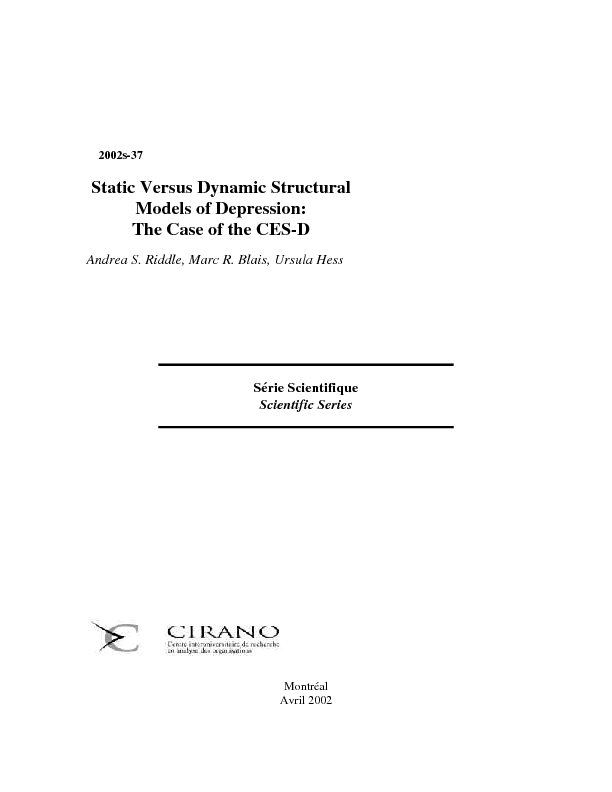Static Versus Dynamic Structural Models of Depression: The Case of the CES-D
Depression is composed of multiple subcomponents including social, cognitive, affective, and somatic symptomatology. Many widely used self-report scales are also multidimensional, suggesting that the subcomponents of depression are empirically differentiated, yet the use of a composite score is the common practice. The authors argue that a closer examination of the subscales of symptom inventories, and their interrelationships, can further our understanding of the development and persistence of depression. Structural equation modeling is used on the French version of CES-D responses (Radloff, 1977) from 1,734 participants, providing an explicit test of causal relations between several response classes commonly associated with depression. These structural models are consistent with a view of depression as a process that unfolds over time and are tested within both a cross-sectional and a prospective framework. They are compared to a higher-order factor model which speaks to the nature, but not the development, of depression.
[ - ]




